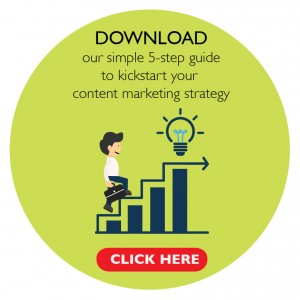Pretty much all great orators – the ones who can talk to 10,000 people while giving off that ‘just having a casual chat with my mate on the sofa’ vibe – can do what they do because they have a lot of practice under their belts. Many have also probably had media training.
Public speaking with impact takes practice and planning. All companies worth their salt understand the importance their ambassadors have in representing their brand, and invest in experts like us at Mutant to help develop confident and compelling delivery.
However, we’ve seen plenty of people who have decided to jump in front of an audience without proper training, thinking they know what they’re doing (can anyone say crash and burn?)
Here are five of the most effective but un-obvious ways to completely lose your audience.
1. Inflate that ego, Narcissus.
“I really really want the audience to like me!”
If you want to alienate your audience and make them instantly dislike you, put yourself before them.
Essentially, your approach to public speaking is all wrong if you aren’t considering what your audience is going to get out of your speech or presentation. You should be asking yourself, “what do I want the audience to leave with, and how do I make this as easy for them to understand as possible?”
A presentation should be planned, written and practised with the audience in mind. This might include:
– Explaining to the audience why you are there and what you are going to present
– Speak important points slowly and repeat them if necessary – but not to the point of condescension
– Conclude by recapping on salient point.
Just remember your audience likely doesn’t know the content as well as you do, so be nice, personable and make your presentation an enjoyable experience – not something they have to survive through.
2. Have absolutely no idea who you’re talking to
Who are your audience? Are they industry leaders? Experienced professionals? Media? Or fresh-faced young talent with a blank slate and open minds? Let the audience inform your delivery.
If they are experts in your field, feel free to dive deep on the detail, acronyms and jargon. If not, calibrate accordingly. It’s surprising how many people get this wrong.
3. Keep it boring, stale, and loooooooooooooong
Even if you’re speaking to a room of industry heavyweights, don’t make the mistake of trying to show superior intelligence by being verbose. Using impenetrable language and stretching one point into five alienates your audience, turns them off and bores them to death. At worst, you might make them think you have something to hide (I could have used the word obfuscate but then, but I chose not to, precisely for this reason.)
TED speakers aren’t allowed to exceed 18 minutes for their presentations. You have a precious time limit for the audience’s attention, who will probably only leave remembering three of your points. Choose them wisely and give them impact.
4. Leave them wanting…less?
“A good speech should be like a woman’s skirt; long enough to cover the subject and short enough to create interest.” – Winston Churchill
Thanks for the typically uncouth quote Winston, but you get the point. This massively applies to a presentation where you want to signpost the audience onto something else. It could be to a product, another event or even an interview with your client. Spill all of the beans and they wont have any need to pursue it further.
5. Over rely on scripts and slides
“I’ll read from my script. That way I’ll avoid the risk of saying the wrong thing or forgetting my point.”
No, no, and no. A speech, presentation or interview is about having a conversation. Even if you’re the only one talking on stage, you’re trying to create a dialogue – not a monologue – between yourself and the audience, and the only way to do that is to talk, not read, and be engaging while you do it.
You want people to walk away believing two things:
a) You believe in your stuff
b) You know your stuff
Yes, it’s good to prepare. But to rely on a script equals less engagement and snoring audiences. Your whole tone and body language changes when you read, rather than talk, and it’s highly obvious. Plus, there are the technicalities to be concerned with. What if the projector doesn’t work on the day? What if someone wants to interview you afterwards to clarify or repeat a point? Knowing your key themes and messages will allow you avoid having to re-wind the tape and start over again.
Learn two or three key points you want to convey from each slide and practice making each point off the cuff without crutches. This will make you more natural, relaxed and ultimately more compelling.
Want to learn more about how to better conduct yourself in front of media? Get in touch with us at hello@mutant.com.sg











